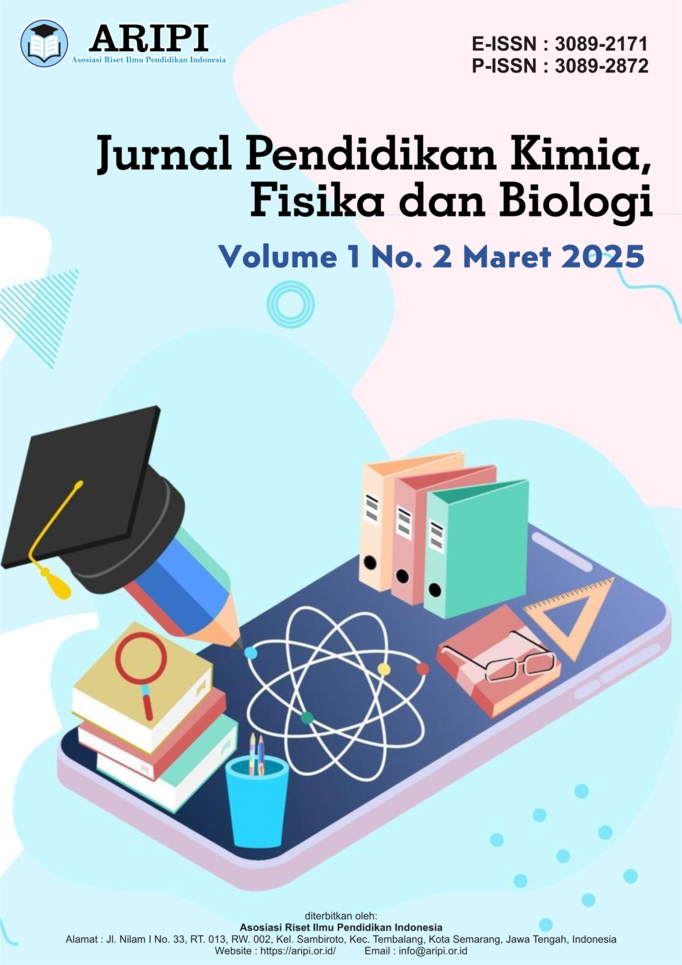Perbandingan Efisiensi Energi Genset Menggunakan Bahan Bakar Biogas dan LPG pada Berbagai Tingkat Beban Listrik
DOI:
https://doi.org/10.61132/jupenkifb.v1i2.220Keywords:
Biogas,, Efficiency, LPG, RPMAbstract
Biogas is an alternative energy source that is environmentally friendly, cheap, easy to obtain and renewable. In general, all types of organic materials can be processed to produce biogas, however only homogeneous organic materials (solid and liquid) such as manure and urine (urine) of livestock are suitable for a simple biogas system. Biogas can be burned like LPG and on a large scale can be used to generate electricity, so that biogas can be used as an alternative energy source that is environmentally friendly and renewable. To determine the performance of biogas as an alternative energy source, in this research the method used is to compare the performance of Biogas with LPG gas as a source of electrical energy. Analysis of trial data per minute (RPM), with varying load levels, shows that the RPM of generators using LPG only decreases slightly as the electrical load increases, which shows that the generator is able to maintain more consistent performance. The RPM produced by LPG, which ranges from 2358 to 2420 RPM, indicates that the engine is running faster and more efficiently, while biogas has a lower RPM, ranging from 1715 to 1820 RPM, which indicates slower operation. LPG efficiency ranges from 89.60% to 98.12%, while biogas efficiency ranges from 74.67% to 89.60%. Even though biogas shows less stable performance than LPG, biogas still has potential as an alternative fuel, especially in areas that have limited access to LPG but have abundant sources of biogas raw materials. The use of biogas can reduce dependence on fossil fuels and reduce greenhouse gas emissions. Even though LPG is more efficient, biogas has significant potential to be developed as a more environmentally friendly alternative energy source because LPG relies on non-renewable fossil fuels and has a negative impact on the environment in the long term.
References
Ahamed, J., Saidur, R., & Masjuki, H. H. (2011). A review on exergy analysis of internal combustion engine (ICE) based cogeneration systems. Renewable and Sustainable Energy Reviews, 15(8), 4185-4192.
Bond, T., & Templeton, M. R. (2011). History and future of domestic biogas plants in the developing world. Energy for Sustainable Development, 15(4), 347-354.
Dalpaz, R., Konrad, O., da Silva Cyrne, C. C., Barzotto, H. P., Hasan, C., & Guerini Filho, M. (2020). Using biogas for energy cogeneration: An analysis of electric and thermal energy generation from agro-industrial waste. Sustainable Energy Technologies and Assessments, 40, 100774.
Haryanto, A., Nindhia, T. G., Rahmawati, W., Hasanudin, U., Saputra, T. W., Santosa, A. B., & Triyono, S. (2019). Effect of load on the performance of a family scale biogas-fuelled electricity generator. In IOP Conference Series: Earth and Environmental Science, 355(1), 012078. IOP Publishing.
Janardana, G. N., & Wijaya, I. W. A. (2021). Pemanfaatan pembangkit listrik tenaga surya sebagai catu daya listrik pada kelompok usaha pertanian. SPEKTRUM, 8(3), 54.
Kabeyi, M. J. B., & Olanrewaju, O. A. (2022). Technologies for biogas to electricity conversion. Energy Reports, 8, 774–786.
Kumar, S., Samadder, S. R., & Choudhury, P. (2021). Biogas production from organic waste and its utilization: Recent trends and challenges. Renewable Energy, 168, 672-688.
Prihutama, F. A., et al. (2017). Pemanfaatan biogas sebagai energi alternatif ramah lingkungan daerah Desa Monggol, Kabupaten Gunungkidul, Yogyakarta. SNITT - Politeknik Negeri Balikpapan.
Rao, P. K., Kumar, R., & Bhaskar, T. (2019). Biomass-derived biogas: Future perspectives and challenges. Renewable and Sustainable Energy Reviews, 101, 285-297.
Samnur, & Andi Muhammad Irfan. (2011). Analisis kesetaraan nilai kalor LPG dengan biogas dari biodigester skala rumah tangga. Jurnal Teknik Mesin Teknologi, 14(2), 103–110.
Shakoor, U., Ali, S. A., Rashid, M., Irfan, M., Hussain, M., & Usman, M. (2020). Performance evaluation and adaptation of biogas plant users among rural households of Pakistan. Performance Evaluation, 14(12), 1097–1116.
Sudrajat, A., & Haryanto, H. (2019). Improved performance of CS 100l LPG fuel generator with the addition of biogas. In IOP Conference Series: Materials Science and Engineering, 494(1). IOP Publishing Ltd.
von Meier, A. (2020). Electric power systems: A conceptual introduction. Wiley-IEEE Press.
Weyant, C. L., Thompson, R., Lam, N. L., Upadhyay, B., Shrestha, P., Maharjan, S., ... Pokhrel, A. K. (2019). In-field emission measurements from biogas and liquified petroleum gas (LPG) stoves. Atmosphere, 10(12), 729.
Yadav, M., Kumar, P., & Singh, R. (2020). Comparative study of energy efficiency between biogas and LPG as fuel for rural households. Energy Procedia, 158, 47-52.
Downloads
Published
How to Cite
Issue
Section
License
Copyright (c) 2025 Jurnal Pendidikan Kimia, Fisika dan Biologi

This work is licensed under a Creative Commons Attribution-ShareAlike 4.0 International License.





